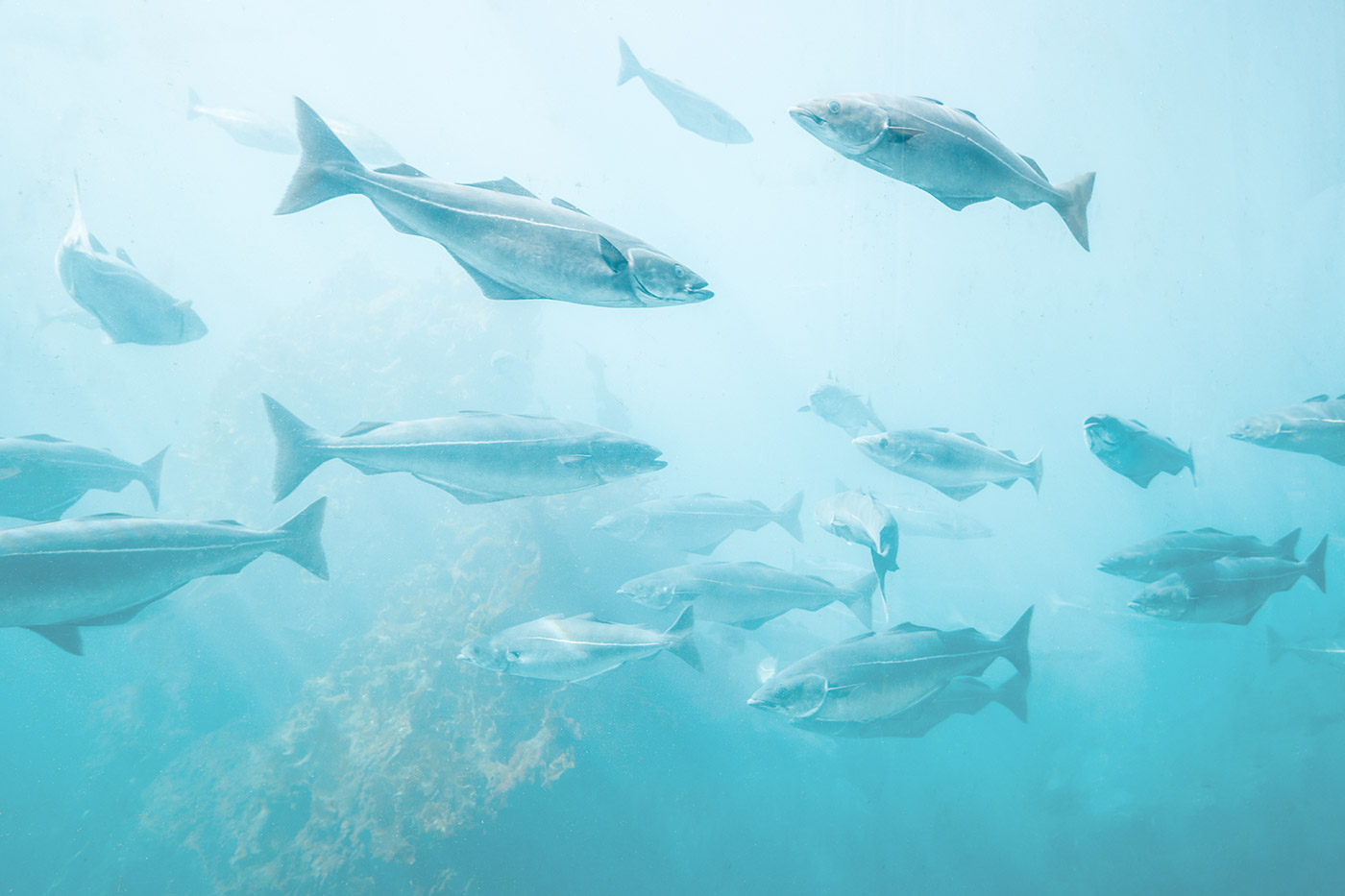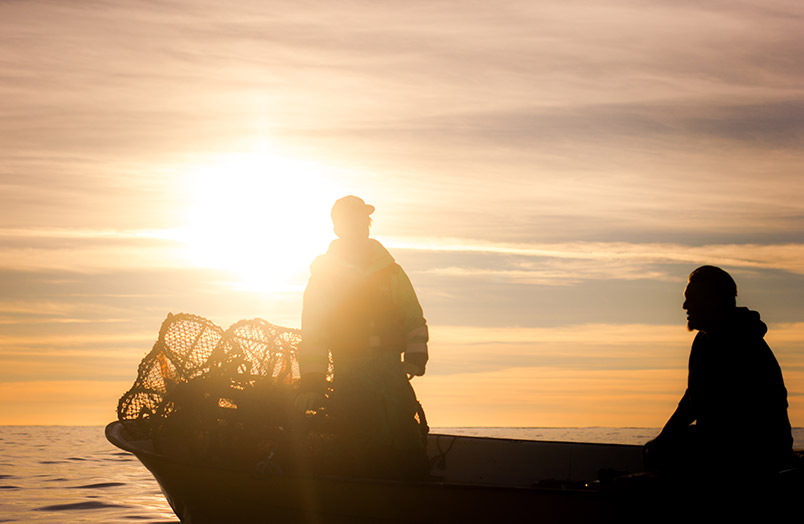The island municipality of Utsira is located in an area that is favorable for farming fish, seaweed and kelp, shellfish and other relevant marine fish species.
Due to the island's natural location, with direct access to the Gulf Stream and strong water currents, Utsira is also well suited as a location for land-based fish farms.

The sea areas at Utsira were previously considered to be too little shielded from wind and waves for the operation of cage facilities to be relevant. Since then, the level of knowledge about conditions such as driveability, durability, safety and working environment for such facilities has improved significantly, and the sea areas around Utsira can today be used.
By producing salmon in the waters around Utsira, which is closer to the open sea and more exposed to the weather, it is envisaged that farming will become more sustainable.

Brown algae are what we call seaweed and kelp. The largest of the brown algae are called kelp, and these are found along the entire Norwegian coast and form large kelp forests that are habitat for a rich wildlife. Seaweed and kelp bind CO, produce oxygen and grow rapidly. In Asia, kelp cultivation has taken place for a long time and is a huge industry. In Norway, this industry is relatively new, and the species grown are sugar kelp (Saccharina latissima) and butare (Alaria esculenta).
The production is climate-friendly in that kelp only needs sunlight, CO₂ and nutrients in the sea to grow. Cultivation takes place by growing seedlings in a lab on ropes. The ropes are placed at a depth of 3 to 15 meters in the sea. In the course of 4-6 months, the kelp plant goes from being one centimeter, to being over two meters long. The kelp is put into the sea in autumn / early winter and harvested in spring.
Sea lettuce is an annual green algae that is common along the Norwegian coast. The leaves are normally 10-15 centimeters in diameter and can be as large as 1m². For cooking, dried leaves can be used as spices and due to the mild taste, they can be used raw in salads and cooked with vegetables in soups. The texture is reminiscent of spinach.
The sea lettuce is produced using vessels on land with a flow of nutrient-rich seawater from a depth of 40-70 meters. The algae grows well only with nutrient-rich water from the sea and UV light, but there is an opportunity for even faster growth by adding more nutrients, for example from fish sludge.
Scallops thrive in cold and clear seawater with some ocean current. They thrive from just below the tidal zone and all the way down to 100 meters deep on sand and gravel bottoms. The largest populations are found at a depth of 10-30 meters, preferably in strong currents. In nature, it takes 4 to 5 years before the scallops are large enough to be harvested, but in farming they can be harvested after 2 years to 3 years.
Scallops can be grown in vertical nets (lantern nets), which are area-efficient, gentle on the ecosystem and safer than adding operation to the seabed. Hanging cultures make it possible to select for the fastest growing scallops. This reduces production time and can increase profitability in production.